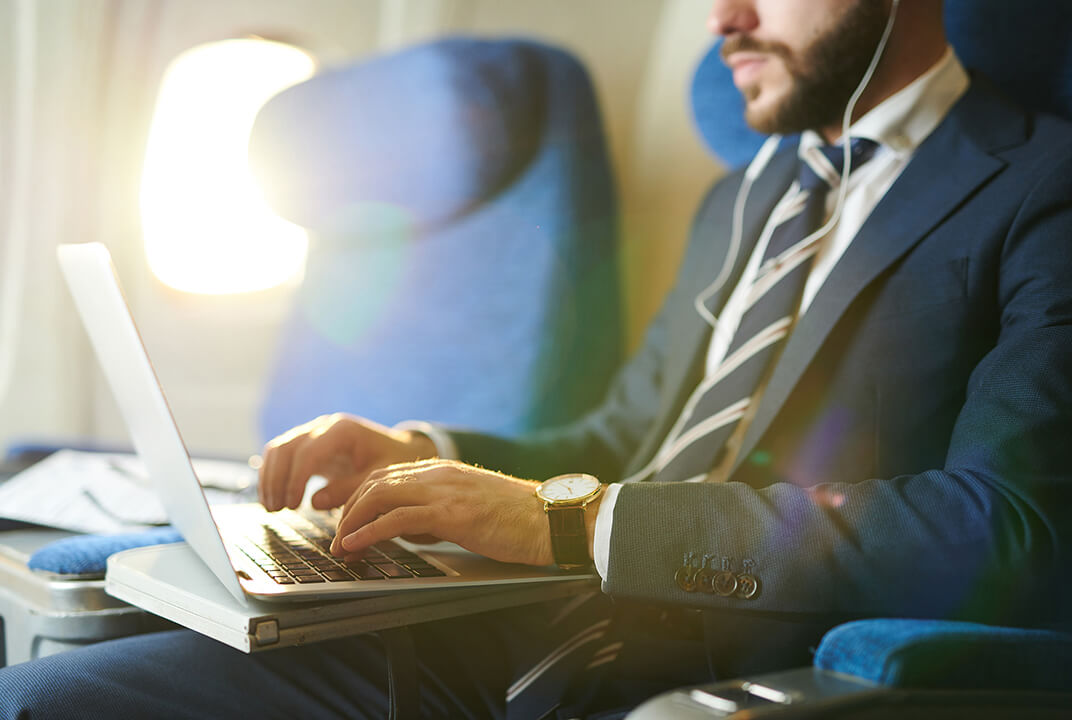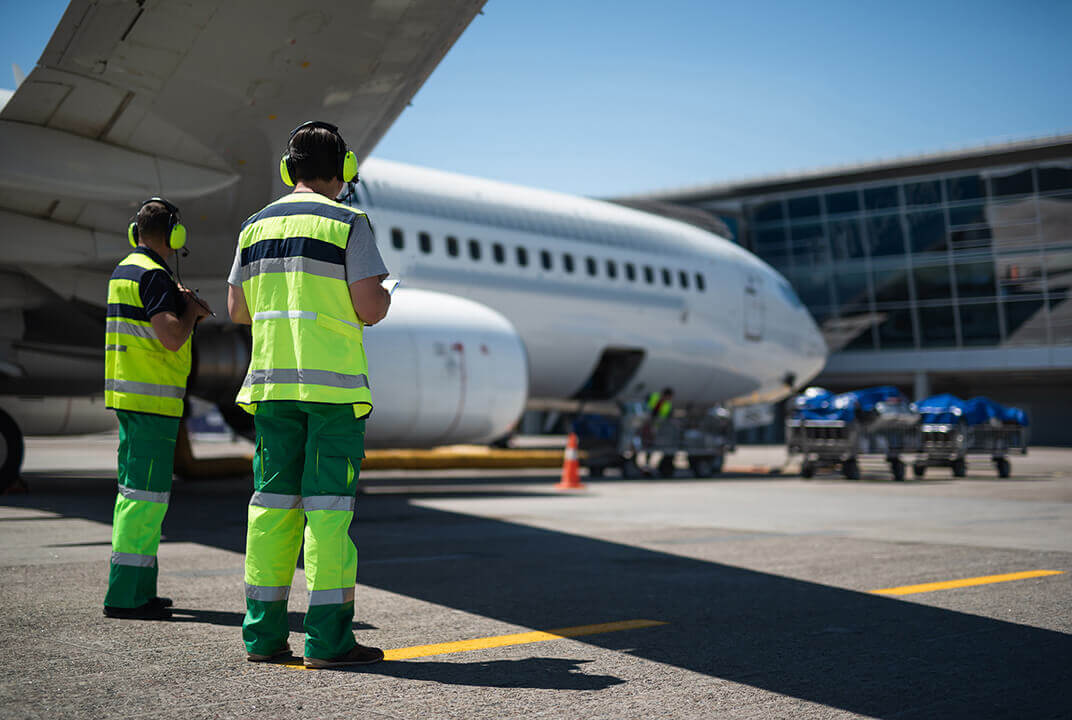Insight | 2018 aviation trends
Select Language
2018 aviation trends
null
Customised seats, robot cleaners and low cost long-haul – here’s what’s on the radar
2017 saw the world of aviation continue to unlock the many opportunities brought by digital innovation. These include Lufthansa’s €500m investment in customisation and digitisation of services to a groundbreaking London School of Economics study, commissioned by Inmarsat, that revealed there could be $130bn of ancillary revenue generated from inflight broadband connectivity by 2035. But what does 2018 hold for commercial aviation?
Rise of premium economy
Premium economy bookings are expected to boom in 2018.
The past few years have increasingly seen airlines focus on business and premium economy – 2016 saw Iberia launch a premium economy offering and American Airlines debuted its premium economy cabin in April 2017. This, say some airline commentators, is a trend that looks to continue. Emirates is launching a premium economy cabin, while Austrian Airlines has also announced its intention to introduce one in 2018. Many airlines no longer see this as a downgrade for business class passengers but rather as an opportunity to offer the choice of a premium seat on longer flights for those who can’t justify full business fares. Indeed, many premium economy seats now offer features such as support for laptops and connectivity options that help enable inflight working.
Sweet seating
As competition for passengers grows, travellers are expecting more from premium seats, so airlines are often changing the seats rather than the cabin they sit in. This customisation trend sees airlines make hardware alterations, such as the number of USB ports available, or the addition of a PED holder or bespoke soft material finishes.
By customising seats, airlines will be able to provide premium passengers with all the tools the traveller needs, while keeping costs down by providing more basic seats for others, with fewer trimmings. By making the seats bespoke rather than the whole cabin, airlines create a more premium feel without incurring additional expense.
Our robot helpers
2017 saw Seoul’s Incheon International Airport partnering with electronics company LG to test two airport-based robots. One was an airport guide robot which can speak in several different languages, communicate with transiting passengers, and give directions, while the other is a cleaning robot which mops up spills and keeps the airport clean.
They’re cleaning aircraft too
Air Canada has invested in three robots to clean its aircraft. The robots, developed by Swedish company Aerowash scoot around the hangars with large rollers attached. The main benefits is a need for less manpower in the hangars, plus there’s a proven reduced risk of accidents.
Self-service ID
We’re all familiar with iris and fingerprint scans, but companies such as SITA are pushing boundaries further by trialling self-boarding using self-service ID management. A recent trial of SITA Smartpath at Boston Logan Airport attempted to board passengers in a single step using biometric technology, nicknamed ‘board in a snap’.
It works by integrating the technology with the airport’s infrastructure, capturing the passenger details through a fast facial scan as soon as they enter the airport. The technology creates one secure virtual token, associated with their face, which the passenger will use to segue from airport to plane.
In Australia the government has announced its intention to transform airport security by automating 90% of passenger processing by 2020 through facial recognition. Electronic passports will be retired and replaced by biometric tools that recognise faces.
Fish features
Dubai is taking biometric devices one step further by completely removing security counters in 2018 and introducing a tunnel of virtual fish which are actually small cameras. Before boarding the plane passengers will walk through a virtual aquarium tunnel populated by virtual fish whose job it is to capture passenger’s data. Passengers will need to pre-register before passing through the tunnel from booths around the airport terminal.
Biometric entertainment
Biometrics will impact more than just security in 2018. Biometric companies have long stated their intention to streamline passenger experience from airport to air. This could include in-seat immigration, biometric payment, and choosing entertainment options based on personal preference. Panasonic recently teamed up with Tascent Inc and stated its goal was to “bring biometric passenger identification into every stage of the passenger journey.”
VR pushes last-minute upgrades
Lufthansa is testing a new way to get passengers to upgrade their tickets by letting them sample premium seats – using VR glasses. The airline will allow passengers to upgrade from economy to premium economy at the last minute. The airline says that the best way to understand how good premium economy is to help passengers experience the benefits of extra legroom and seat pitch through VR.
Connected ancillaries
Inmarsat’s London School of Economics study predicts that broadband in the sky will be a $130bn market by 2025, thanks to it facilitating various ancillary revenue streams. These, include charging customers for using broadband, e-commerce, inflight advertising and offering premium content (such as live sports matches) through video streaming.
Book a taxi in the sky
Moving map FlightPath 3D is trialling a way for passengers to book taxis via the IFE flight path on their seatback screen. Passengers can input their final address into the moving map which will then provide the cab company with to-the-minute updates on the plane’s arrival time. Once they land, passengers will receive an SMS detailing where and when their ride will be.
Growth of low cost airlines
If 2017 felt like a bumper year for low cost airlines, then 2018 will be another year of rapid growth. Traditionally LCCs were short-haul only as, to save costs, they would return to their hubs in the evening. Now LCC are developing hubs around the world and starting to fly a greater number of long-haul routes. 2018 sees the arrival of WestJet’s ultra low cost carrier (Swoop), offering no-frills flying. The launch of IAG’s Level also rides the wave of the long-haul low cost trend.
Airlines are ramping up their focus on millennial consumers
The disposable income of millennials, combined with their penchant for city breaks, has seen Air France announced the launch of 'youth airline' Joon, offering low-cost flights to cities like Berlin. The cabin crew will be clad in bright white trainers, while the plane will feel ‘innovative and offbeat’.
The safest year ever
Aviation’s safety record is outstanding despite increasing passenger numbers. No deaths were recorded on commercial passenger jets during the whole of 2017, according to Dutch aviation safety group To70. The findings showed that there is, on average, one fatality per 16 million flights, making 2017 the safest year ever. As the skies get busier, new technologies and improved cockpit connectivity will help aviation maintain these safety standards.
2018 looks set to be an exciting year for aviation. AI and digitisation will dominate, introducing novel and exciting ways to change the way standard procedures are carried out, from aircraft washing to IFE. The year will also see greater connectivity which will impact on more than just the passenger experience. 2018 will see planes, airports, and passengers get smart.


